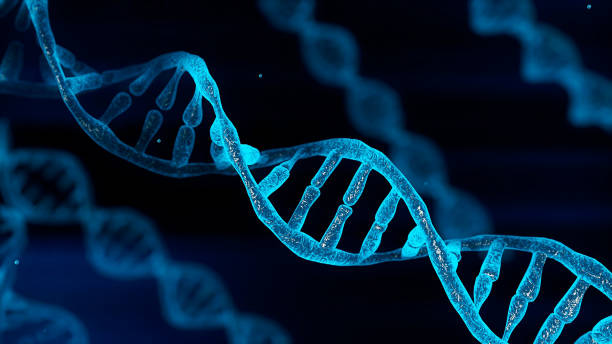Table of Contents
The full form of DNA is Deoxyribonucleic Acid. It’s a complex molecule that carries the genetic instructions used in the growth, development, functioning, and reproduction of all known living organisms and many viruses.

Some briefs of DNA
- Structure: It is composed of two strands that form a double helix. Each strand is made up of nucleotides, which include a phosphate group, a pentose sugar group (deoxyribose), and a nitrogen base (adenine, thymine, cytosine, or guanine).
- Function: It contains the instructions needed for an organism to develop, survive, and reproduce. These instructions are found within the sequence of the nucleotides.
- Discovery: It was first identified by the Swiss biologist Friedrich Miescher in 1869, but its significance as the carrier of genetic information was not realized until the mid-20th century.
- Replication: DNA can replicate itself, which is essential for cell division and reproduction. This process ensures that each new cell has an exact copy of the DNA.
- Protein Synthesis: DNA sequences are transcribed into messenger RNA (mRNA), which is then translated into proteins. Proteins perform a vast array of functions within living organisms.
- Genetic Code: The order of the nitrogen bases along a DNA strand forms a code, which is read in groups of three bases, known as codons. Each codon specifies a particular amino acid, which are the building blocks of proteins.
- Types: There are several forms, such as A, B, and Z-DNA, which differ in their helical structure and biological function.
- Genetic Variation: While all human beings share a high percentage of DNA, slight variations in the sequence of bases account for the vast diversity among individuals.
Here are the 10 amazing facts
- Compact Information Storage: It is incredibly efficient at storing information. In fact, it is in just one of your cells contains enough information to fill a whole library of books.
- Long Molecular Strands: If you were to unravel all the DNA molecules in your body and lay them end to end, they would stretch from Earth to the Sun and back more than 600 times.
- Universal Language: It is the universal language of life. All living organisms on Earth, from bacteria to humans, use DNA as their genetic material.
- Genetic Diversity: Despite the genetic similarities among humans, each person’s DNA is unique. The probability of two unrelated individuals having identical DNA is incredibly small.
- Coding and Non-Coding Regions: Only a small portion of our DNA actually codes for proteins, which are the building blocks of life. The remaining DNA, once thought to be “junk DNA,” is now known to play crucial roles in regulating gene expression and other cellular processes.
- Genetic Mutation: It is subject to mutations, which are changes in the DNA sequence. While some mutations can be harmful and cause diseases, others contribute to genetic diversity and evolution.
- Replication Precision: When a cell divides, it must accurately replicate its DNA to pass on genetic information to the next generation. The DNA replication process is remarkably precise, with an error rate of only about one mistake per billion nucleotides.
- Mitochondrial genetic material: While most of our It is found in the cell nucleus, we also have a small amount of DNA in our mitochondria, the cell’s energy producers. This mitochondrial DNA is inherited exclusively from the mother and is used to trace maternal ancestry.
- Forensic Identification: DNA profiling, also known as DNA fingerprinting, has revolutionized forensic science. By comparing DNA samples from crime scenes with those of suspects or a DNA database, forensic scientists can identify individuals with remarkable accuracy.
- Genetic Engineering: Advances in DNA technology have enabled scientists to manipulate DNA sequences, leading to breakthroughs in biotechnology, medicine, and agriculture. Techniques like CRISPR-Cas9 allow for precise editing of genes, holding promise for treating genetic disorders and creating genetically modified organisms with desired traits.
Understanding DNA is crucial for various fields, including genetics, medicine, forensics, and biotechnology. It’s the foundation of heredity and is central to the study of life sciences. 🧬
Facebook link: https://www.facebook.com/share/p/FHwsbK2EtbDHkyWE/?mibextid=Nif5oz
YouTube Link:
Instagram Link:

